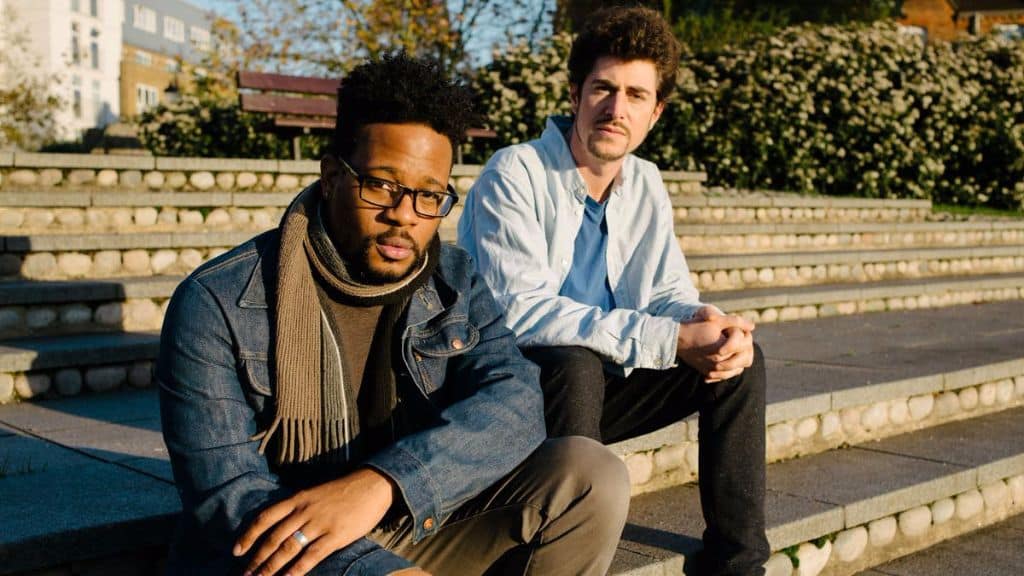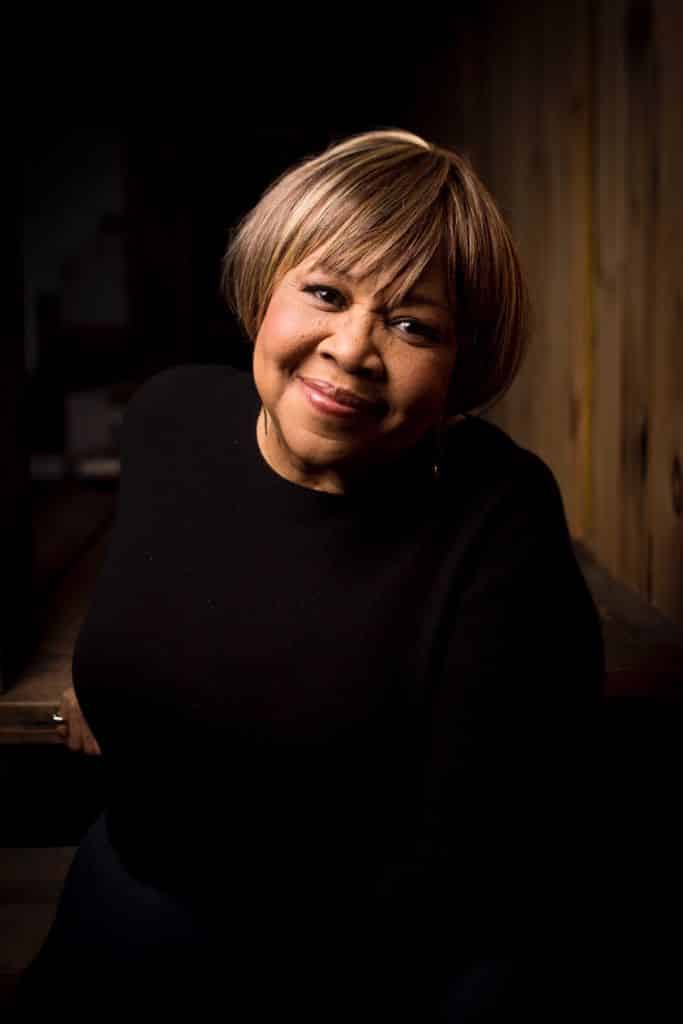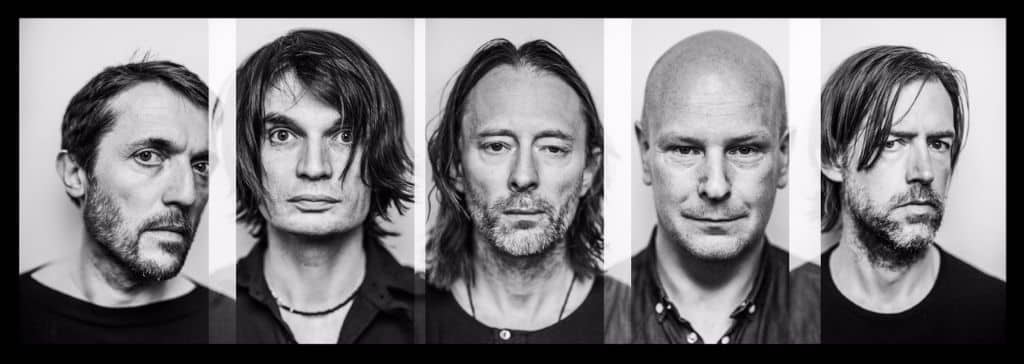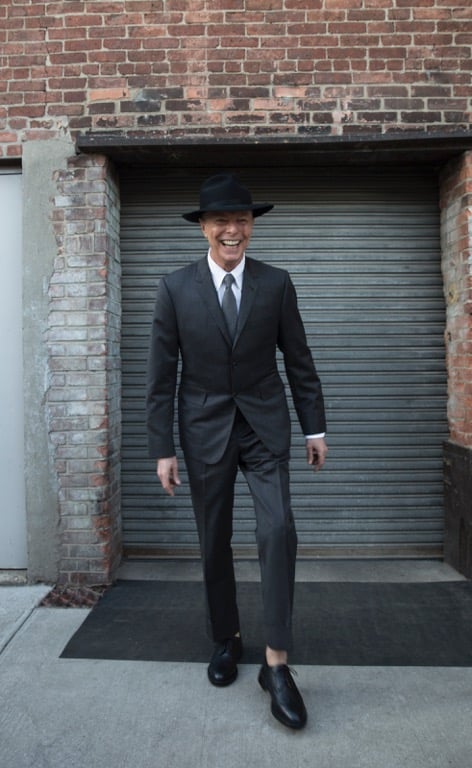The final 20 albums in the Tonal Ranger’s 2016 countdown
Listen to Tonal Ranger Radio every other Wednesday, from 1 to 4 p.m. MST, on KNCE 93.5 FM, to hear songs from the albums reviewed in this space, and so much more new and interesting music.
This is it: the final 20 albums of 2016 (check out Part I and Part II) as enjoyed by your humble columnist and DJ, Andy Jones, aka The Tonal Ranger. We have a wide variety of styles cracking the top 20, and it’s clear that as awful as 2016 was in many, many ways, it was pretty amazing when it came to music. Here’s to the year that was, and to more great music in 2017.
-
(tie) Teens of Denial by Car Seat Headrest (Matador)
After all these years, rock ’n’ roll can sometimes get a little boring, but every once in a while someone comes along who can take all the traditional elements of the genre (electric guitars, bravado, noise, drums, etc.) and turn them on their head in such a way that everything becomes fun again. Enter young Will Toledo, the one-time home-recording raconteur who has a knack for referencing The Cars, Guided by Voices and Pavement without seeming trite in any way. In fact, Toledo’s worldview is so, how shall we say, twisted, that his lyrical concepts manage to carry these songs in great directions, even with all those guitars, that silly swagger and all that jazz, eh, rock.
-
(tie) Nothing More To Say by The Frightnrs (Daptone Records)
Nothing More To Say is the first reggae album released on Daptone Records, and the first full-length album for the foursome from Jamaica, Queens, New York. Tragically, this soulful, retro album is also the band’s only album with singer Dan Klein, who passed away due to amyotrophic lateral sclerosis (aka ALS, aka Lou Gehrig’s Disease) in June, nearly three months before the album’s release. Klein’s diagnosis was made during recording Nothing More To Say and the urgency is there, lurking behind the band’s throwback, and infectious take on classic rock steady (the Jamaican predecessor to reggae). Musically speaking, the classic sounds on this album are pure, and perfect songs like “Hey Brother” should serve as a lasting tribute to Klein.
-
HEAVN by Jamila Woods (Closed Sessions)
Jamila Woods is one of those multi-media artists; a poet raised in Chicago who attended Brown University. She got a degree in Africana Studies and Theatre & Performance Studies. All of this oozes out on her debut album, HEAVN, a collection of infectious R&B that explores what it is to be a black woman in 2016. Brought up in the church choir, Woods’ music recalls Erykah Badu and the latest efforts from Kelis. A member of M&O (formerly known as Milo & Otis), it’s amazing that Woods even has time for this music thing, serving as associate artist director for a Chicago nonprofit youth organization, designing curriculum for Chicago Public Schools and teaching poetry the world over. I’m glad she does have time. It’s a great album, especially considering you can get it for free on SoundCloud.
-
(tie) Marble Mouth by Pillar Point (Polyvinyl Records)
If you ever wondered what happened to Throw Me the Statue, and specifically to its leader Scott Reitherman, look no further. Reitherman formed his solo recording project Pillar Point in 2013 and released the “band’s” debut in 2014. Marble Mouth might be the best of a slew of contenders in the “best modern synth-pop” category in 2016, with an album that drenches modern-day concerns in a velvety wrap of vintage synthesizers and danceable beats. The album is as fun as it is difficult to pin down.
-
(tie) Colvin & Earle by Colvin & Earle (Fantasy Records)
She’s a little bit pop, he’s a little bit country; they’re both a whole lot of folky. Shawn Colvin and Steve Earle met nearly 30 years ago, when the former was invited to open a show for the latter in Northampton, Massachusetts. With guitarist and producer extraordinaire Buddy Miller handling production duties, the album is loose and live feeling, never overproduced or too heavily textured. The material is much more uplifting than one might expect from two seasoned veterans who often mine emotional territory. You can actually hear it: they’re having fun.
-
Hella Personal Film Festival by Open Mike Eagle & Paul White (Mello Music Group)
Hella Personal Film Festival features Eagle’s trademark whimsical, laid-back delivery on the back of White’s mostly funk-infused instrumentals. And while the music is from the ’70s and the rapping is from the ’90s, the themes Eagle addresses are strictly rooted in the present. Eagle takes potentially heavy-handed subjects (racism, technology overuse) and keeps them imbibed with frothy and delicious amounts of levity, pulling together thoughts and ideas that are seemingly disparate to wind up creating something impressively cohesive. White provides the right amounts of soul bravado and light experimentalism, but never overshadows Eagle’s oddly profound lyricisms in the process.
-
Livin’ On A High Note by Mavis Staples (ANTI-)
At 76 years old, most of Mavis Staples’ contemporaries are either retired or dead. So, in true Mavis Staples style, she just finds a younger generation of musicians to collaborate with. This time around, Staples looks to singer/songwriter M. Ward to steer the ship, and to his credit, he enlists the help of fellow songwriters like Benjamin Booker, The Head & The Heart, Valerie June, Nick Cave, Neko Case, Tune-Yards, Ben Harper, Son Little, Aloe Blacc and Justin Vernon to pen their own versions of Staples’ uplifting, socially conscious music. It’s another winning formula for Staples.
-
My Woman by Angel Olsen (Jagjaguwar)
With My Woman, Olsen builds on the successes of her 2014 breakthrough album, Burn Your Fire for No Witness, as well as her other previous work to create her most well-rounded album to date, with great writing and strong production (recorded to tape at L.A.’s Vox Studios and produced by Justin Raisen). Conceived in the traditional “Side A, Side B” vinyl album cycle, My Woman’s first half is loaded with the album’s most raucous tunes, while “Side B” is contemplative and forlorn. The entire album is something of a high-wire act, balancing so many disparate concepts and styles with such fluidity—it really is a thing of beauty, and a nice step forward for Olsen.
-
Pearls to Swine by Adam Torres (Fat Possum)
With a musical palette somewhere between Nick Drake and Townes Van Zandt, and a voice that harkens back to Jimmie Dale Gilmore, Justin Vernon or Jeff Buckley (need I mention that the instrument is falsetto?), Albuquerque-born, Austin-based Adam Torres is a singer/songwriter’s singer/songwriter, offering earnest and thoughtful music that is probably not for the masses, but will be revered by those of us who appreciate this sort of thing. There is peace and serenity in Torres’s music, even at his most raucous, and an ethereal quality that makes the whole album feel a little bit like a dream. Pearls to Swine won’t make you dance, but if thoughtful ballads written by falsetto-wielding, English teaching, water managing folk troubadours—songs that take time to decipher and repeated listens to soak in—then Pearls to Swine might be right up your alley.
-
(tie) Jet Plane and Oxbow by Shearwater (Sub Pop)
Released on the heels of David Bowie’s Blackstar, Shearwater lead singer Jonathan Meiburg has never sounded so much like Ziggy Stardust, with a highly energetic set of songs that expands on the pop explorations of 2012’s Animal Joy. “Filaments” delivers a funky bass line, and album standout “Quiet Americans” makes the Bowie comparison ring true. Jet Plane and Oxbow is Shearwater’s most dynamic album and its most fun to listen to. It’s arguably the band’s best work to date.
-
(tie) FLOTUS by Lambchop (Merge Records)
Things are not always as they seem in the world of Lambchop, especially on the group’s 12th album. Take for instance the album’s title, FLOTUS. Bandleader Kurt Wagner has different ideas for the acronym that is generally accepted to represent First Lady of the United States. He claims that FLOTUS stands for “For Love Often Turns Us Still.” FLOTUS is an experimental expansion of the Lambchop sound. Immediate gratification has never been the goal of any Lambchop record. As with any of the band’s best work, the listener will only be rewarded if they put in some time, as repeated listens draw out the musical nuance, and the lyrical nuggets that make Wagner one of our great songwriters. There may not be any big hooks, or catchy choruses, but if you can get to this special place with Lambchop, you’ll find yourself not wanting to listen to anything else for a while all the same.
-
(tie) Changes by Charles Bradley (Dunham/ Daptone)
Changes as an album title might be one of the most understated things about this soulful, beautiful and exuberant collection of tunes. Bradley’s shift from working crappy jobs and living with his mother to touring the world and receiving critical acclaim would certainly fall under the category of change. He captures those feelings beautifully on the title track, a cover of Black Sabbath’s 1972 power ballad. It’s a moment almost as unexpected as Bradley’s own career. The one-time James Brown impersonator could’ve hardly imagined writing a song like “Good to Be Back Home” just eight years ago. The album highlight celebrates seeing his nation in a new light after touring oversees. Talk about changes.
-
A Man Alive by Thao and the Get Down Stay Down (Ribbon Music)
Pulling from myriad influences, “A Man Alive” is Thao & The Get Down Stay Down’s accomplished, well-rounded and highly enjoyable fourth album. Fronted by Thao Nguyen, The Get Down Stay Down drop much of the guitar-driven indie rock that was a staple of their first three albums, making room for a sound propelled by beats and bass, exploring more hip-hop influences than previous efforts. What results is a highly literate example of modern-day art rock, with smatterings of pop, post punk and soaring indie rock all thrown into the unique mixture. A deeply personal record, perhaps the greatest of “A Man Alive’s” accomplishments is its ability to tell a personal story while making us want to dance at the same time. It’s rare and genuine and necessary in a world that often wants us to look at our highs and lows in much more absolute terms.
-
Puberty 2 by Mitski (Dead Oceans)
On Puberty 2, 25-year-old songwriter and musician Mitski sets up the premise of a second puberty, another awkward phase that also serves as a thrilling and tense sequel to the original. Regardless of theme, Mitski has a knack for hooks — the kind that rely on melodies so powerful you feel like they’ve always been in your head (“Happy” and “Fireworks”). Puberty 2 has more ambitions than just capturing the angst of 20-something life in the age of too much information; it is also a musically complex, dense, brooding, and beautiful album that sits nicely next to some of the most challenging, but critically acclaimed artists of the past few years.
-
Real by Lydia Loveless (Bloodshot Records)
With her fourth studio album, Loveless continues to evolve her musical palette and grow as a songwriter. The 25-year-old takes the country-rock basics that were no doubt nurtured during her childhood—split between a farm in rural Ohio and the state’s biggest city, Columbus—and continues to add subtle layers from other genres and influences. Tracks like “Heaven” and “Midwestern Guys” are two songs on Real that show what new skins Loveless is capable of inhabiting; with the former being a dance-floor mash-up of disco, funk, new wave and ’80s alternative (think IRS-era R.E.M.). The latter is a Mellencamp meets Benatar meets Pet Shop Boys rave up that takes lyrical aim at gentlemen of a certain age who still revel in their own glory days. Loveless still excels at the forlorn and slightly twisted, but is also highly skilled at penning stupid-catchy love ballads (“Out on Love,” “Bilbao” and “Clumps”) and the even more catchy mid-tempo breakup songs (“Longer,” “Same To You” and “Real”). Loveless’s honest, no-B.S. songwriting always seems to take the listener someplace Real.
-
Human Performance by Parquet Courts (Rough Trade)
“Parquet Courts shoots! They score!” Five albums and two EPs in, the only “miss” on the list might be the late-2015 EP Monastic Living, which saw the band exercising its electronic chops, sans lyrics. But that’s forgivable, because that effort was critical to the band’s development that led up to the amazing Human Performance. When the clock is winding down, and you need some insightful, clever, biting rock and roll, you know who to dish the ball to: Parquet Courts.
-
A Moon Shaped Pool by Radiohead (XL)
Radiohead’s latest effort finds the five original members doing what they do best: eschewing expectations and confounding those who might claim they know what to expect from one of the most influential and innovative groups of the past 30 years. In true Radiohead fashion, even the darkest nooks and crannies of life are filled with impeccable moments of clarity and absolute beauty. At no point is this more apparent than on the gorgeous and symphonic “Glass Eyes,” the epic and lonely “The Numbers” and the album’s closing track, “True Love Waits.” The album is, in many respects, the band’s most surreal and somber effort, full of songs that float ethereally in and out of our focus, managing to pull together some fine bits of rock and roll every now and then.
-
case/lang/veirs by case/lang/veirs (ANTI-)
What started as a simple email suggestion from legendary chanteuse k.d. lang (lowercase hers) to quirky indie folk songwriter Laura Veirs and alt-country-indie rock superhero Neko Case has turned out to be a pretty damn fine collaboration. The overall results are amazingly coherent. While the singers trade lead vocals, providing harmonies and background voices when appropriate, it’s hard to parse the vocalist from the writer and hearing lang sing something written by either of the other two just somehow seems natural. The album is focused and sonically gorgeous thanks to the collaborative writing approach and to the work of producer Tucker Martine and a strong cast of musicians. If there is a lesson to take from case/lang/veirs, it might be this: when you get an email offering collaboration with someone you admire, say yes.
-
Blackstar by David Bowie (ISO/Columbia Records)
Released on his 69th birthday, the album gave critics reason to celebrate and social media was awash with good birthday tidings for the man who had also just released on off-Broadway musical, “Lazarus.” Two days later, he was dead, the casualty of liver cancer that had been diagnosed 18 months earlier. The fact he had not made his diagnosis public meant his death came as a surprise to all but those who where closest to him. Blackstar is a stunning achievement, a blend of avant-garde with flourishes of jazz, electronica, pop and rock that offers, at least lyrically, a glimpse of Bowie’s final months—the things that occupied his mind as he coped with the knowledge that he was dying. One can possibly read too much into the lyrics of this album, asking whether Bowie is singing “I’m dying to,” or “I’m dying too” on “Dollar Days,” for instance, but perhaps we should take it as it is, the last outstanding piece of art delivered by a man who always did things on his own terms.
-
Emily’s D+Revolution by Esperanza Spalding (Spalding Productions)
This is what popular music should sound like in 2017, a seamless mishmash of styles backed up by an endless amount of talent, professionally honed and simultaneously gifted from the stars. On this album, Spalding channels Emily, the artist’s middle name but also the “spirit-muse” of the album’s accompanying live show theatrical performance, which incorporates stage design, movement and acting.
An inventive artist conjuring up a new identity to create a masterwork? Where have we seen that before? Well, now that you bring it up, six tracks on the album are co-produced by longtime David Bowie collaborator Tony Visconti, who also worked with the late legend on the No. 2 album on this list. Both records apply a jazz method but expand themselves to the outer reaches of genre, pulling elements of pop, folk, hip-hop, alternative rock and even a little heavy metal along for a wild and thrilling ride.














